ARMENIAN PLUM
Prunus Armeniaca, commonly known as the apricot tree, loves heat and sunshine, especially in spring. A spring frost can kill off the young fruit.
That’s why the tree is mostly grown in and around the Mediterranean. The apricot tree arrived in France in the 18th century. It is grown mostly in the south of the country, where there are around 30 different varieties.
Turkey is the world’s biggest apricot producer, accounting for 20% of global output in 2012. Most production is concentrated in Malatya, in the south-east of the country, and most of the apricots grown here are subsequently dried. In fact, 85% of dried apricots consumed worldwide come from Malatya.
Scoop!
The tree’s Latin name means “Armenian plum”. In the 18th century, botanist Carl Linnaeus cemented the long-held (probably false) belief that the species originated in Armenia.
In fact, the apricot tree likely came from China.
Did you know?
Not all apricot varieties are suitable for drying. Whether or not an apricot can be dried depends on its sugar and water content. In order to produce a sweet, fleshy dried apricot, the original fruit needs a high sugar and dry matter content.
Most apricot varieties grown in France are eaten fresh.
Discover the stages from farm to plate:
There are 8 million apricot trees in Malatya, each capable of producing 100-150kg of fruit on average. The Hacıhaliloğlu variety accounts for 73% of apricot trees. The next most common is the Kabaaşi variety. Both produce fruit that is suitable for drying. The Hacıhaliloğlu variety produces a generally yellow apricot, sometimes with red markings. It has a firm flesh and a low water content, and is particularly sweet and aromatic.
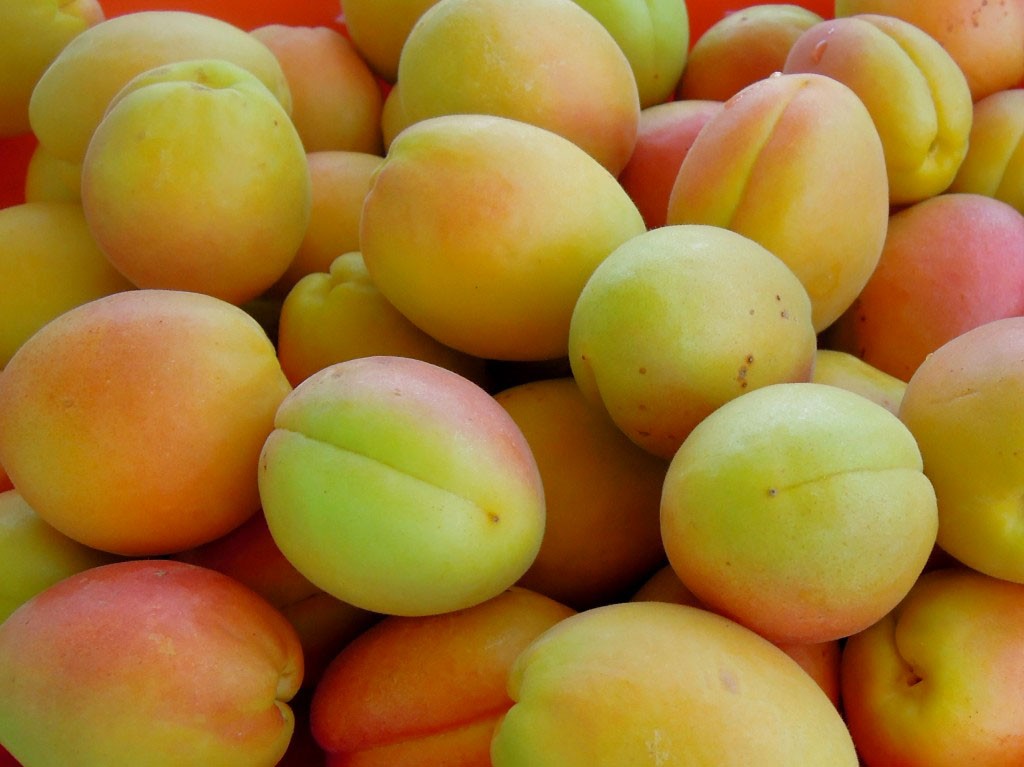
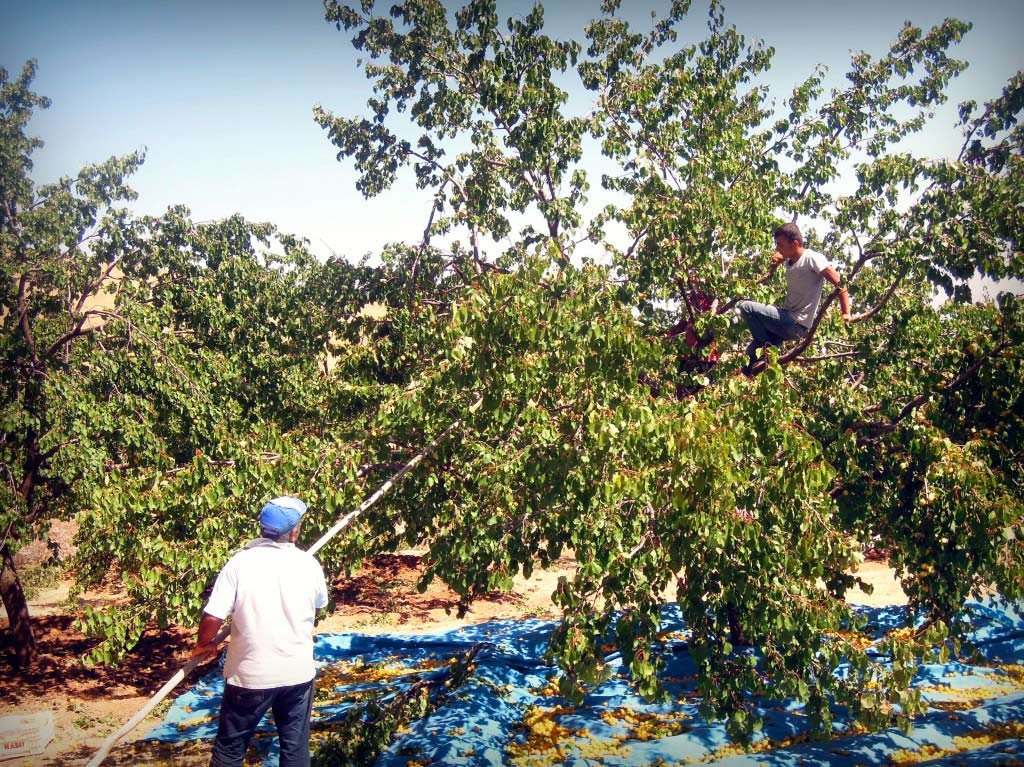
The apricot tree flowers in March before producing its leaves.
Apricots are harvested between May and July. The work is done entirely by hand. Harvesters shake the trees repeatedly and collect the fallen apricots in large sheets placed on the ground below. The apricots are then collected and stored in small cages for transport.
In most cases, the apricots are treated with sulphur dioxide (fumigated for 24 hours). This makes them easier to dry, increases their shelf life, helps to retain their orange colour and avoids insect infestation. They are then spread on sheets on the ground and left to dry naturally in the sun for three or four days. After a few days, they are still soft enough to be pitted by hand. They are then left to dry in the sun for a further three days or so.
Dried apricots that have not undergone sulphur fumigation turn brown, just like your skin does in the sun!
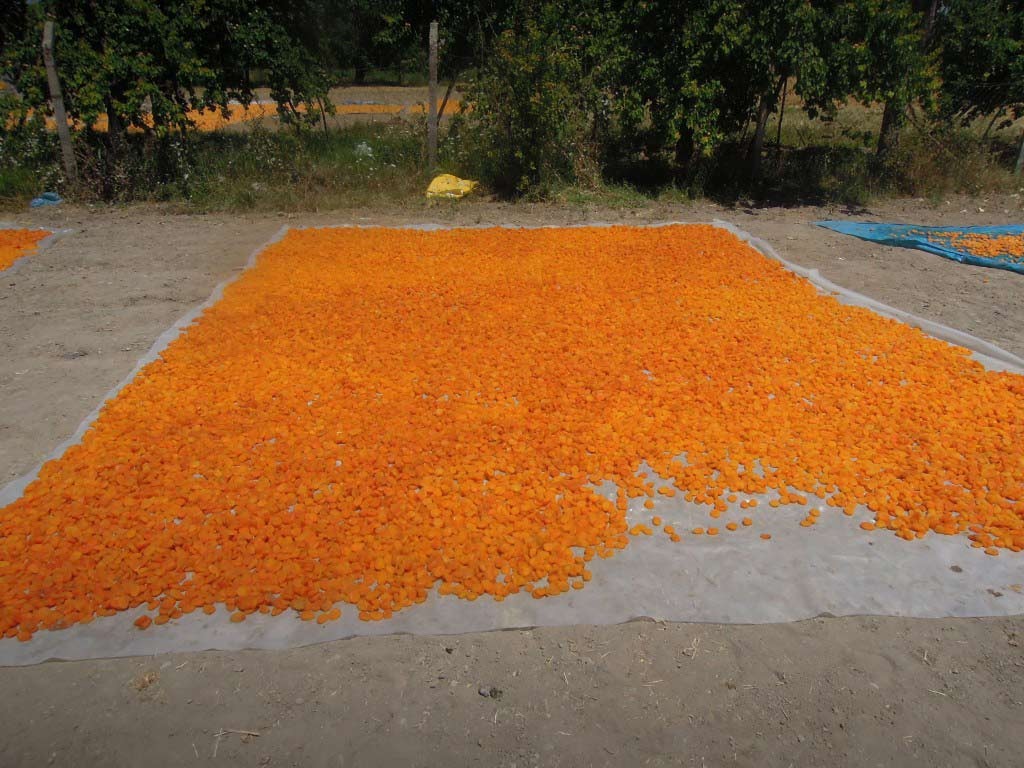
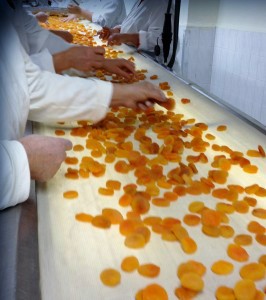
The apricots are washed to remove all sulphur residue and other impurities before being exported.
They are then sorted:
- by size: there are nine different grades, according to the number of dried apricots per kilo
- by quality: there are three different grades, according to the type and number of defects observable on the dried apricot.
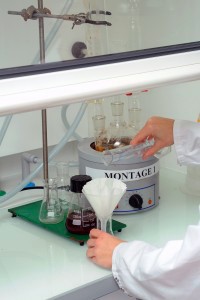
The dried apricots are then loaded into containers and shipped across the Mediterranean to the port of Marseille, where they undergo customs checks on arrival.
We then take delivery of the dried apricots at our production facility in Marseille, where we process and package them. But first, the batches undergo quality checks to ensure they comply with our specifications.
Non-sulphur fumigated dried apricots are packed straight into our 100% Natural punnets. Those that have been treated are rehydrated and turned into “soft” apricots. The dried apricots pass through a “blancher”, where they’re sprayed with water or fruit juice, according to the desired recipe. They take on water, and the water content increases from 25% to a maximum of 45%. This gives the fruit its soft, melt-in-the-mouth texture, hence the same “soft” apricots.
At COLOR FOODS, we have a wide range of packaging machines to pack our products into handy punnets, bags and small pots to meet consumer demand.
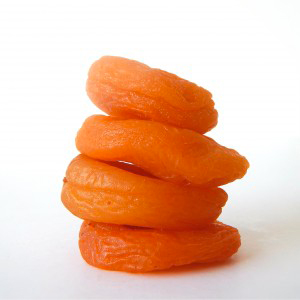
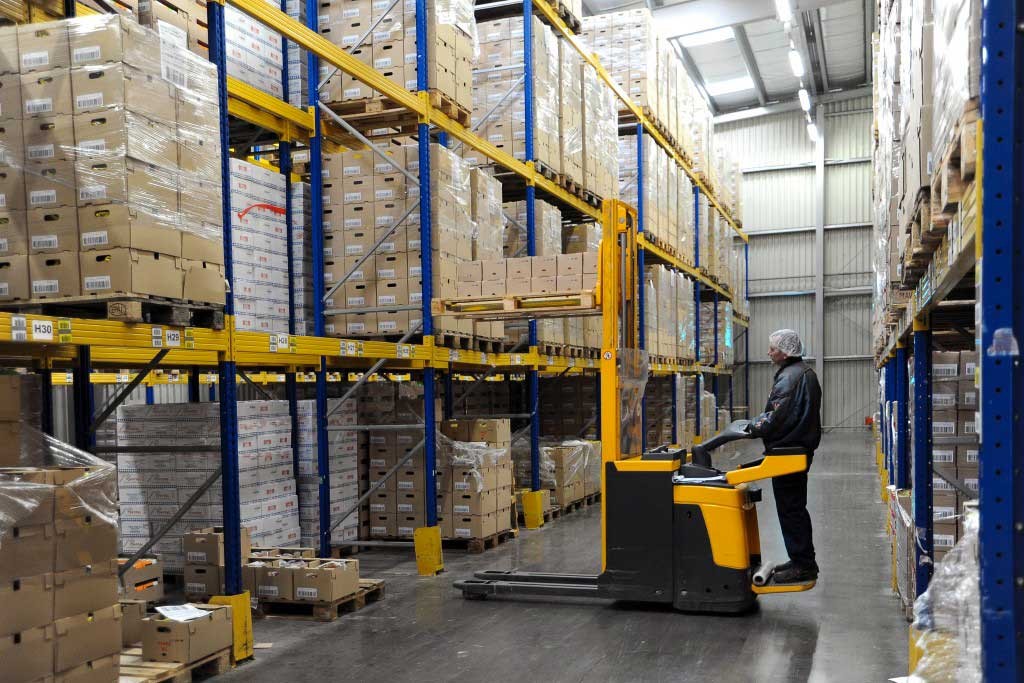
At this point, our logistics team takes over, picking and preparing orders for shipping. The team arranges for our products to be delivered to our customers’ logistics platforms before being transported to stores.
- + Production
-
There are 8 million apricot trees in Malatya, each capable of producing 100-150kg of fruit on average. The Hacıhaliloğlu variety accounts for 73% of apricot trees. The next most common is the Kabaaşi variety. Both produce fruit that is suitable for drying. The Hacıhaliloğlu variety produces a generally yellow apricot, sometimes with red markings. It has a firm flesh and a low water content, and is particularly sweet and aromatic.

- + Récolte
-

The apricot tree flowers in March before producing its leaves.
Apricots are harvested between May and July. The work is done entirely by hand. Harvesters shake the trees repeatedly and collect the fallen apricots in large sheets placed on the ground below. The apricots are then collected and stored in small cages for transport.
- + Séchage
-
In most cases, the apricots are treated with sulphur dioxide (fumigated for 24 hours). This makes them easier to dry, increases their shelf life, helps to retain their orange colour and avoids insect infestation. They are then spread on sheets on the ground and left to dry naturally in the sun for three or four days. After a few days, they are still soft enough to be pitted by hand. They are then left to dry in the sun for a further three days or so.
Dried apricots that have not undergone sulphur fumigation turn brown, just like your skin does in the sun!

- + Lavage et tri
-

The apricots are washed to remove all sulphur residue and other impurities before being exported.
They are then sorted:
- by size: there are nine different grades, according to the number of dried apricots per kilo
- by quality: there are three different grades, according to the type and number of defects observable on the dried apricot.
- + Transport et réception
-

The dried apricots are then loaded into containers and shipped across the Mediterranean to the port of Marseille, where they undergo customs checks on arrival.
We then take delivery of the dried apricots at our production facility in Marseille, where we process and package them. But first, the batches undergo quality checks to ensure they comply with our specifications.
- + Fabrication
-
Non-sulphur fumigated dried apricots are packed straight into our 100% Natural punnets. Those that have been treated are rehydrated and turned into “soft” apricots. The dried apricots pass through a “blancher”, where they’re sprayed with water or fruit juice, according to the desired recipe. They take on water, and the water content increases from 25% to a maximum of 45%. This gives the fruit its soft, melt-in-the-mouth texture, hence the same “soft” apricots.
At COLOR FOODS, we have a wide range of packaging machines to pack our products into handy punnets, bags and small pots to meet consumer demand.

- + Expédition
-

At this point, our logistics team takes over, picking and preparing orders for shipping. The team arranges for our products to be delivered to our customers’ logistics platforms before being transported to stores.
